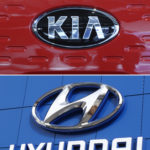Pennsylvania-based Harleysville Insurance Group posted an $8.1 million profit in the first quarter – a drop compared with the $17.3 million it made in the year-ago quarter, but enough to earn an upgraded rating from A.M. Best.
Catastrophe losses were to blame for relatively lower earnings: Harleysville paid out nearly $21 million for the first quarter, compared with $1.7 million in the year-ago quarter.
“Harleysville — and much of the industry — experienced an unusually high level of catastrophe losses during the first quarter of 2010,” said Michael L. Browne, president and chief executive officer. “All told, we experienced six loss events during the quarter that were classified as catastrophes. While these catastrophe losses received the most attention during the quarter, I think it’s important to note that the underlying fundamentals of our business remain very strong.”
The company’s statutory combined ratio for the quarter was 107.8, with 10 points of that figure attributed to catastrophe losses. In the first quarter of 2009, the combined ratio was 101.9.
In commercial lines, net written premiums decreased 3 percent to $173.0 million in the first quarter of 2010. The commercial lines statutory combined ratio was 104.7 in the first quarter of 2010, versus 102.6 percent in the first quarter of 2009.
In personal lines, net written premiums were up 14.0 percent to $43.8 million in the first quarter of 2010. Harleysville’s personal lines statutory combined ratio was 119.3 percent in the first quarter of 2010, versus 98.9 percent during the first quarter of 2009.
Ratings Improved
A.M. Best has upgraded the ratings for Harleysville’s property/casualty operations to A (Excellent) from A-, and Harleysville Life Insurance Co. to A- from B++. All Harleysville ratings have a stable outlook.
Best cited the company’s “excellent and improving risk-adjusted capitalization, solid operating performance and regional market franchise” and also noted its “focus on underwriting discipline, growing use of sophisticated predictive analytic modeling tools, prudent management of catastrophe exposures, well established agency relationships, strong name recognition and stable market presence are all contributing drivers to the group’s improvement in earnings and overall capitalization levels.”
Browne said the upgrade “validates the successful execution of our strategy to focus on the basics in order to retain our best business and generate long-term profitability.”
Was this article valuable?
Here are more articles you may enjoy.

 Allstate Thinking Outside the Cubicle With Flexible Workspaces
Allstate Thinking Outside the Cubicle With Flexible Workspaces  Indian News Agency Sues OpenAI for Copyright Violation
Indian News Agency Sues OpenAI for Copyright Violation  Trump Team Targets Auto Mileage Rules He Blasted as ‘EV Mandate’
Trump Team Targets Auto Mileage Rules He Blasted as ‘EV Mandate’  Allstate Insurers Sue Hyundai, Kia to Pay for Claims From Defective Cars
Allstate Insurers Sue Hyundai, Kia to Pay for Claims From Defective Cars 